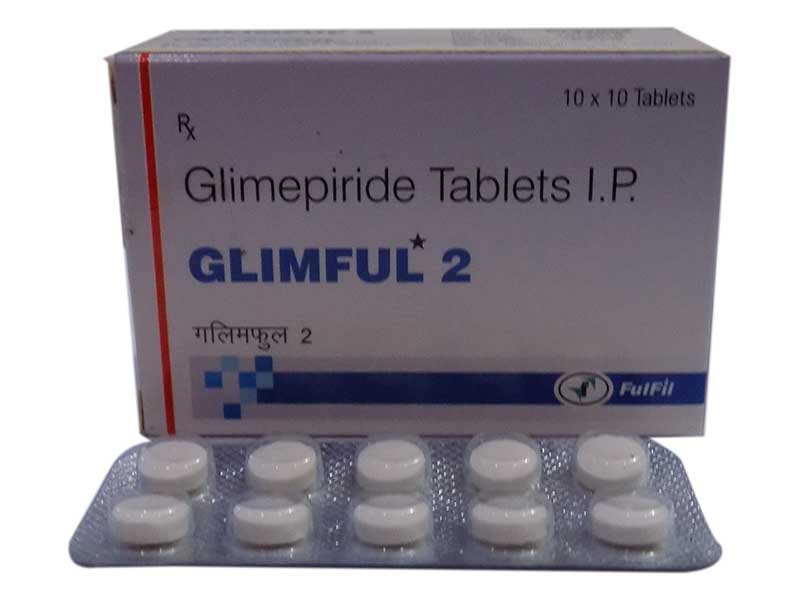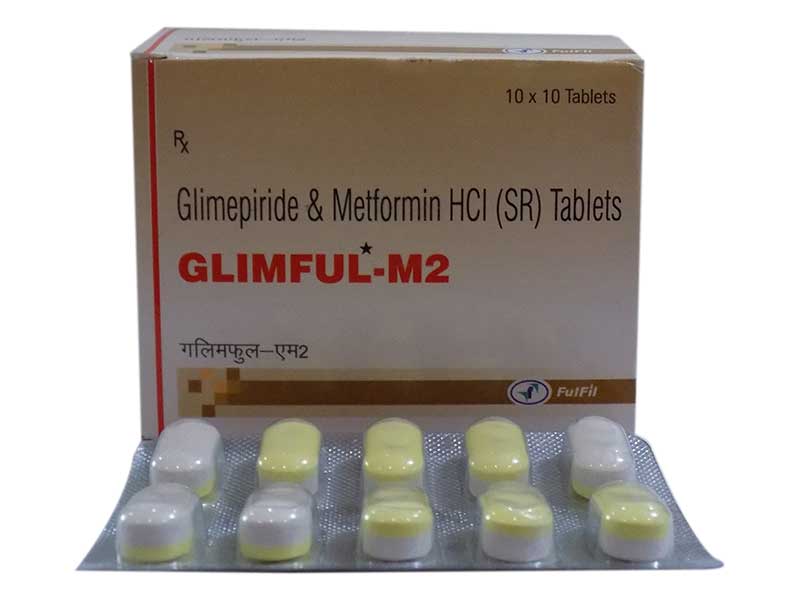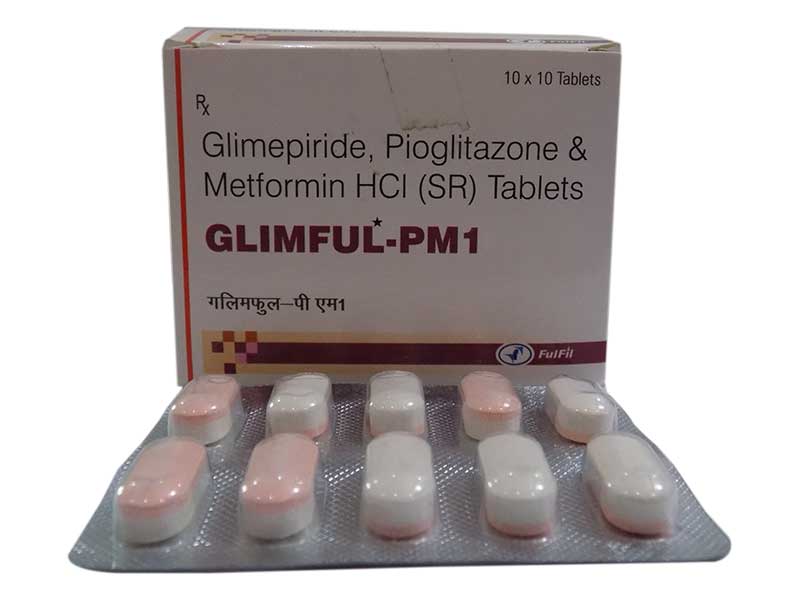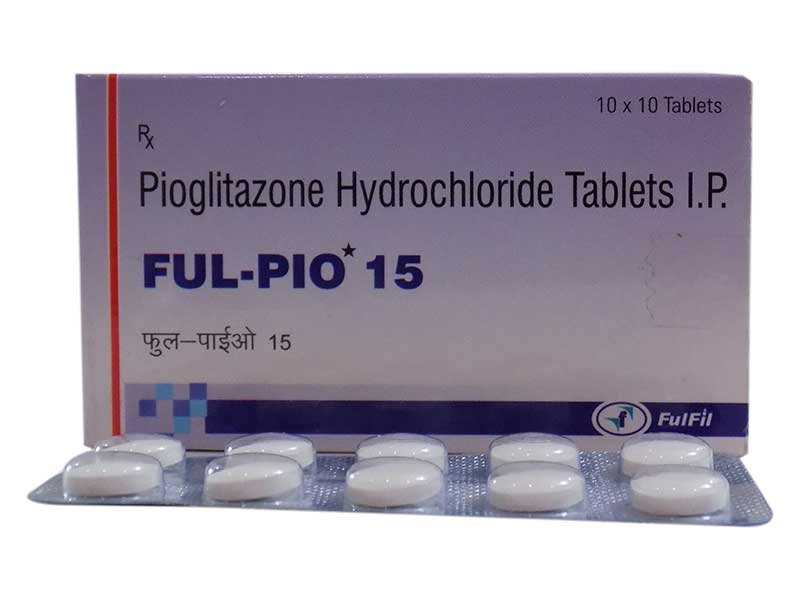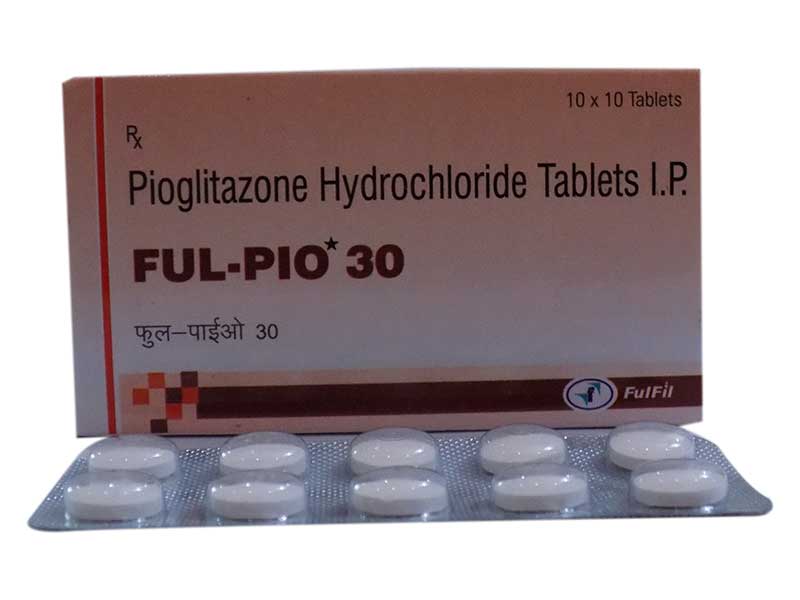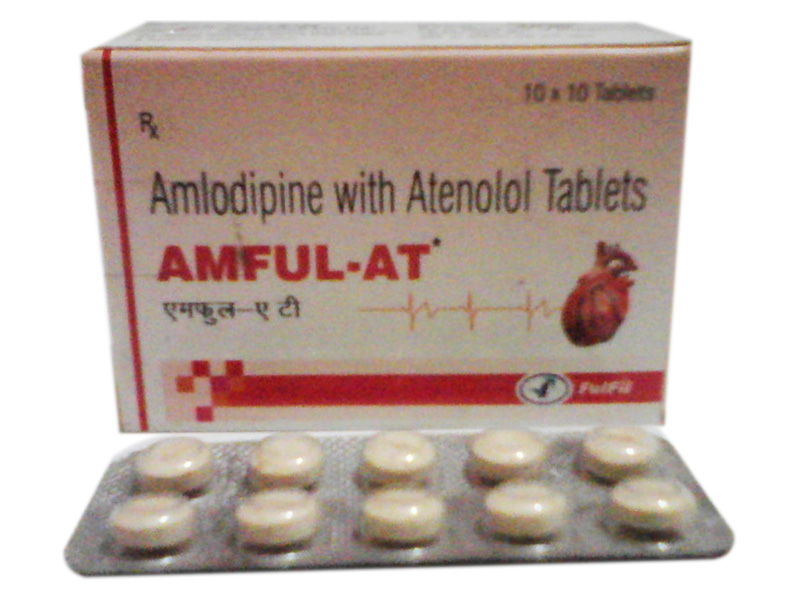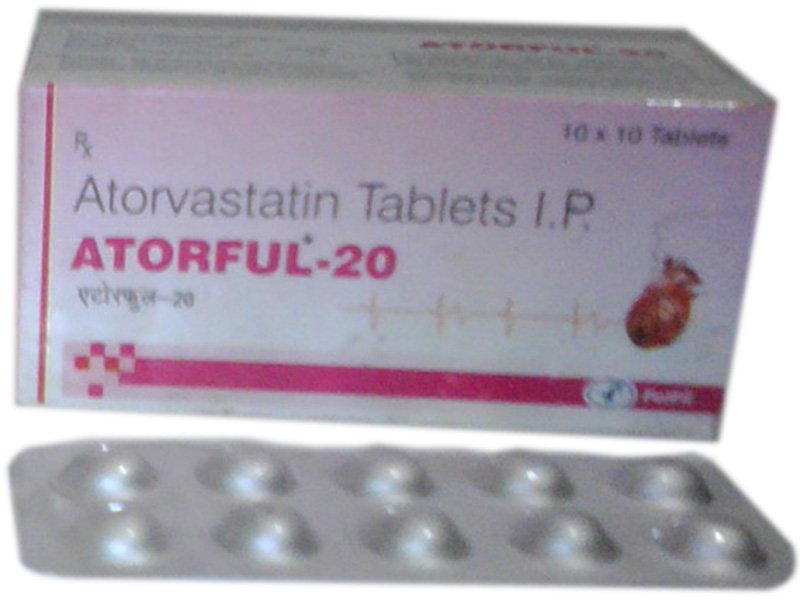Anti Diabetic
GLIMFUL™ 1
Glimepiride 1 mg is a medium-to-long acting sulfonylurea anti-diabetic drug.
Pharmacokinetics
Glimepiride stimulates the insulin release from functioning pancreatic β-cells and inhibits gluconeogenesis at hepatic cells. It also increases insulin sensitivity at peripheral target sites.
Indication
Glimepiride is used to lower the blood sugar levels in type 2 diabetes mellitus when diet, physical exercise and weight reduction alone are not adequate.
Dosage
Adult: Initially, 1-2 mg daily. Maintenance: 4 mg daily. Max: 6 mg daily.
Renal impairment: Initiate at 1 mg daily; subsequent increments should be based on fasting blood glucose levels.
Food(before/after)
Should be taken with food. (Take immediately before the 1st main meal of the day. Do not skip meals.)
GLIMFUL™ 2
Glimepiride 2 mg is a medium-to-long acting sulfonylurea anti-diabetic drug.
Pharmacokinetics
Glimepiride stimulates the insulin release from functioning pancreatic β-cells and inhibits gluconeogenesis at hepatic cells. It also increases insulin sensitivity at peripheral target sites.
Indication
Glimepiride is used to lower the blood sugar levels in type 2 diabetes mellitus when diet, physical exercise and weight reduction alone are not adequate.
Dosage
Adult: Initially, 1-2 mg daily. Maintenance: 4 mg daily. Max: 6 mg daily.
Renal impairment: Initiate at 1 mg daily; subsequent increments should be based on fasting blood glucose levels.
Food(before/after)
Should be taken with food. (Take immediately before the 1st main meal of the day. Do not skip meals.)
GLIMFUL™ M1
(Glimepiride 1 mg + Metformin 500 mg)Pharmacokinetics
Glimepiride stimulates the insulin release from functioning pancreatic β-cells and inhibits gluconeogenesis at hepatic cells. It also increases insulin sensitivity at peripheral target sites. Metformin decreases hepatic gluconeogenesis, decreases intestinal absorption of glucose and improves insulin sensitivity (increases peripheral glucose uptake and utilisation).
For control of both high FBS (Fasting Blood Sugar) and high PPBS (Post Prandial Blood Sugar)
Produces dual effect to control monotherapy-resistant type 2 diabetics
GLIMEPIRIDE – Improves impaired insulin secretion from pancreas
METFORMIN – Improves insulin resistance in peripheral tissues
Also improves metabolic control in diabetes mellitus
Help nullifying weight gain cause due to glimepiride therapy
Indicated in - Monotherapy-resistant diabetes mellitus, As adjunctive treatment in type 1 diabetes along with insulin.
GLIMFUL™ M2
(Glimepiride 2 mg + Metformin 500 mg)Pharmacokinetics
Glimepiride stimulates the insulin release from functioning pancreatic β-cells and inhibits gluconeogenesis at hepatic cells. It also increases insulin sensitivity at peripheral target sites. Metformin decreases hepatic gluconeogenesis, decreases intestinal absorption of glucose and improves insulin sensitivity (increases peripheral glucose uptake and utilisation).
For control of both high FBS (Fasting Blood Sugar) and high PPBS (Post Prandial Blood Sugar)
Produces dual effect to control monotherapy-resistant type 2 diabetics
GLIMEPIRIDE – Improves impaired insulin secretion from pancreas
METFORMIN – Improves insulin resistance in peripheral tissues
Also improves metabolic control in diabetes mellitus
Help nullifying weight gain cause due to glimepiride therapy
Indicated in - Monotherapy-resistant diabetes mellitus, As adjunctive treatment in type 1 diabetes along with insulin.
GLIMFUL™ PM1
(Glimepiride 1 mg + Metformin 500 mg + Pioglitazone 15 mg)Three drug combination to control diabetes…….
Improves both fasting and PPBS sugar control.
Increases both insulin secretion and peripheral utilization of glucose.
Extend patient compliance
Indicated in –
Monotherapy and dual therapy resistant type 2 diabetes mellitus
GLIMFUL™ PM2
(Glimepiride 2 mg + Metformin 500 mg + Pioglitazone 15 mg)Three drug combination to control diabetes…….
Improves both fasting and PPBS sugar control.
Increases both insulin secretion and peripheral utilization of glucose.
Extend patient compliance
Indicated in –
Monotherapy and dual therapy resistant type 2 diabetes mellitus
FULPIO™-15 MG ( Pioglitazone 15 mg)
Pioglitazone is a prescription drug of the class thiazolidinedione (TZD) with hypoglycemic (antihyperglycemic, antidiabetic) action. It is used with a diet and exercise program and sometimes with other medications, to treat type 2 diabetes.
Pharmacokinetics
Pioglitazone is as a potent and highly selective agonist for the peroxisome proliferator activated receptor-gamma (PPAR). Activation of these receptors promotes the production of gene products involved in lipid and glucose metabolism. It also improves insulin response to target cells witho increasing the pancreatic secretion of insulin.
Dosage - Adult: 15-30 mg once daily increased in increments if necessary. Max dose: 45 mg/day.
Indicated in – Type 2 diabetes, As adjunctive treatment with Metformin , As adjunctive treatment with Sulfonylurea antidiabetics, Diabetes with cardiovascular risk, Prevention of insulin resistance in PCOS (Polycystic ovary syndrome)
FULPIO™-30 MG ( Pioglitazone 30 mg)
Pioglitazone is a prescription drug of the class thiazolidinedione (TZD) with hypoglycemic (antihyperglycemic, antidiabetic) action. It is used with a diet and exercise program and sometimes with other medications, to treat type 2 diabetes.
Pharmacokinetics
Pioglitazone is as a potent and highly selective agonist for the peroxisome proliferator activated receptor-gamma (PPAR). Activation of these receptors promotes the production of gene products involved in lipid and glucose metabolism. It also improves insulin response to target cells witho increasing the pancreatic secretion of insulin.
Dosage - Adult: 15-30 mg once daily increased in increments if necessary. Max dose: 45 mg/day.
Indicated in – Type 2 diabetes, As adjunctive treatment with Metformin , As adjunctive treatment with Sulfonylurea antidiabetics, Diabetes with cardiovascular risk, Prevention of insulin resistance in PCOS (Polycystic ovary syndrome)
AMFUL™-AT
( Amlodipine Besylate 5 mg + Atenolol 50 mg)Atenolol is a cardioselective beta blocker. Amlodipine is a dihydropyridine calcium-channel blocker that blocks the transmembrane influx of calcium ions into vascular smooth muscle and cardiac muscle.
Dosage
Oral
Chronic stable angina, Hypertension
Adult: Per tablet contains atenolol 25 or 50 mg and amlodipine (as besylate) 5 mg: 1 tab once daily, may increase to 2 tablets daily if needed.
Elderly: Per tablet contains atenolol 25 mg and amlodipine (besylate) 5 mg: Initiate with 1 tablet daily.
Renal impairment: Per tablet contains atenolol 25 mg and amlodipine (besylate) 5 mg: Initiate with 1 tablet daily.
ATORFUL™-10
( Atorvastatin 10 mg)Atorvastatin (Lipitor, Pfizer), is a member of the drug class known as statins, used for lowering blood cholesterol. It also stabilizes plaque and prevents strokes through anti-inflammatory and other mechanisms.
Dosage
Oral
Mixed dyslipidaemia
Adult: Initially, 10 or 20 mg daily, may increase at 4-weekly intervals. May initiate with 40 mg once daily in patients who require >45% reduction in low-density lipoprotein cholesterol. Max dose: 80 mg/day.
Indicated in- Hyperchloesterolaemia of varied origins, As adjunct to antidiabetic therapy in diabetes with lipid abnormalities, As adjunctive treatment in insulin resistance,
ATORFUL™-20
( Atorvastatin 20 mg)Atorvastatin (Lipitor, Pfizer), is a member of the drug class known as statins, used for lowering blood cholesterol. It also stabilizes plaque and prevents strokes through anti-inflammatory and other mechanisms.
Dosage
Oral
Mixed dyslipidaemia
Adult: Initially, 10 or 20 mg daily, may increase at 4-weekly intervals. May initiate with 40 mg once daily in patients who require >45% reduction in low-density lipoprotein cholesterol. Max dose: 80 mg/day.
Indicated in- Hyperchloesterolaemia of varied origins, As adjunct to antidiabetic therapy in diabetes with lipid abnormalities, As adjunctive treatment in insulin resistance,

